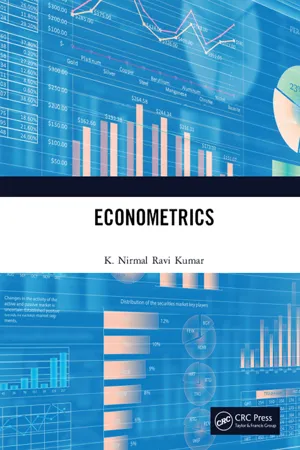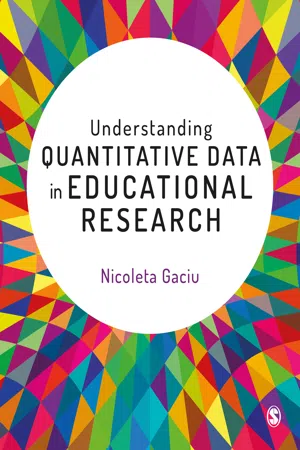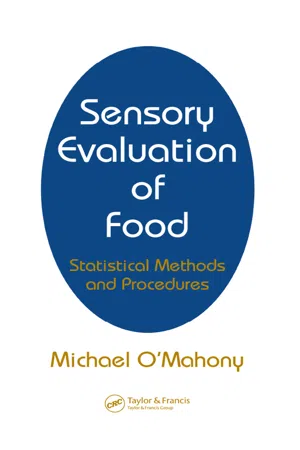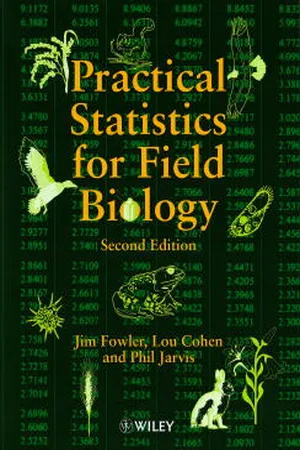Correlation Coefficients
Correlation coefficients in psychology measure the strength and direction of the relationship between two variables. They range from -1 to 1, with 0 indicating no correlation and -1 or 1 indicating a perfect negative or positive correlation, respectively. This statistical measure helps psychologists understand how changes in one variable may be associated with changes in another.
7 Key excerpts on "Correlation Coefficients"
- Steven G. Rogelberg(Author)
- 2016(Publication Date)
- SAGE Publications, Inc(Publisher)
...Measures of Association/Correlation Coefficient Measures of Association/Correlation Coefficient Ronald S. Landis Ronald S. Landis Landis, Ronald S. 927 930 Measures of Association/Correlation Coefficient Ronald S. Landis In many situations, researchers are interested in evaluating the relationship between variables of interest. Such associations are important for testing theories and hypotheses in which changes in one variable are tied to changes in another. In other words, is an increase in one variable associated with a systematic increase or decrease in the other? The most frequently reported measure of association within industrial and organizational psychology is the correlation coefficient (r). Correlation is a standardized index of the extent to which two sets of scores vary together. As an index, correlation can vary between −1 (i.e., a perfect negative relationship) and +1 (i.e., a perfect positive relationship). Correlations near zero indicate the absence of a linear relationship between the variables of interest. Squaring the correlation (i.e., r 2) provides an indication of the percentage of variance in one variable that can be explained by the other variable. For example, if the correlation between height and weight is.50, then 25% of the variance in height can be explained by weight, or vice versa. Numerical Representation of Correlations The correlation between two variables can be described in one of two ways: numerically or graphically. The following example illustrates how correlation is computed and what the numerical value indicates...
- eBook - ePub
- S Alexander Haslam, Craig McGarty(Authors)
- 2018(Publication Date)
- SAGE Publications Ltd(Publisher)
...9 Examining Relationships between Variables: Correlation Key goals for this chapter Introduce correlation – a procedure for examining relationships between variables. Introduce Pearson’s r – a statistic that quantifies the nature and strength of the linear relationship between two variables. Explain how the results of correlational analysis should be interpreted, with particular reference to the difference between correlation and causation. A lot of what we have talked about in the previous two chapters relates to comparisons between means, and comparing means is what psychologists typically do when they use experimental methodology. However, in a great deal of research investigators confront another interesting question: What is the relationship between two variables? For example, how is stress related to heart disease? How is socio-economic status related to mental health? How is personality related to the judgements people make? This type of question can be addressed by experiments (as in the previous chapter, where we used an example of the relationship between the amount of physical contact and attraction), but is more typically examined in surveys. In surveys the researchers collect information about variables where there may be many different values for each variable (in the attraction study, for example, lots of different levels of contact, not just two, and lots of different levels of attraction). Surveys also often measure two or more variables, each with multiple levels. We can contrast this with the case of a t- test where we have an independent variable with just two levels (a categorical variable) and a dependent variable with multiple levels. In survey research we often want to know whether two variables vary together...
- eBook - ePub
- K. Nirmal Ravi Kumar(Author)
- 2020(Publication Date)
- CRC Press(Publisher)
...2.5.4: Extent of overlap indicates Positive Correlation of A and B variables • The sign of the correlation coefficient determines, whether the correlation is positive or negative (ie., direction). The magnitude of the correlation coefficient determines the strength of the correlation. The extreme values of r, that is, when r = ±1, indicate that there is perfect (positive or negative) correlation between X and Y (Appendix 2.A.1). However, if r is 0, we say that there is no or zero correlation. The remaining values falling in sub-intervals of [–1 to +1], describe the relationship in terms of its strength and the Figure 2.6 may be used as a rough guideline as to what adjective should be used for the values of ‘ r ’obtained after calculation to describe the relationship. Say, for example, r = −0.758 suggests a strong negative correlation and r = +0.469 indicates moderate positive correlation. • The value of correlation coefficient is symmetrical in nature. That means, the correlation coefficient between X and Y i.e., r XY is same as correlation coefficient between Y and X i.e., r YX. Fig. 2.6: Measure of strength of correlation between the variables • Correlation is a measure of linear association and linear dependence only and it has no meaning for describing non-linear relations between the variables. Even though correlation measures the linear relationship between two variables, but it will not explain the cause and effect relationship between the variables. That means, it won’t indicate which variable is dependent and which variable is independent. • Correlation is a two way relationship and not one way relationship. For example, height and weight of an individual. Here, height depends on weight and weight depends on height of the individual. • If the two variables are independent, the value of correlation coefficient (‘r’) is zero. But, if r = 0, it does not mean the two variables are independent...
- Nicoleta Gaciu(Author)
- 2020(Publication Date)
- SAGE Publications Ltd(Publisher)
...The table or scatterplot should be carefully examined to compare the variables and to see whether the paired data points follow a straight line which indicates that the value of one variable is linearly associated with the value of the other variable. If an association or a relationship exists between variables, the strength and direction of the relationship will be measured by a coefficient of correlation. To see if the relationship occurs by chance, a null hypothesis is formulated, and then the p -value is computed from the data. We cannot go directly from statistical correlation to causation, and further investigations are required. 13.1 Covariance and correlation between two variables Covariance and correlation describe the association (relationship) between two variables, and they are closely related statistics to each other, but not the same. The covariance measures only the directional relationship between the two variables and reflects how they change together. A direct or positive covariance means that paired values of the two variables move in the same direction, while an indirect or negative covariance means they move in the opposite direction. The formula for covariance is: where x i is the i th x -value in the data set, is the mean of the x values, y i is the i th y -value in the data set, is the mean of the y -values and n is the number of data values in each data set. If cov(X, Y) > 0 there is a positive relationship between the dependent and independent variables, and if cov(X, Y) < 0 the relationship is negative. Example 13.1 Computing the covariance Data file: Ex13_1.csv Suppose that a physics teacher would like to convince her students that the amount of time they spend studying for a written test is related to their test score...
- Bruce B. Frey(Author)
- 2018(Publication Date)
- SAGE Publications, Inc(Publisher)
...A positive correlation means as one variable increases the other also increases. A negative correlation means that as one variable increases the other decreases. Third, correlations describe the strength of the association. Strength in this context means how closely do the two variables change together? In a perfect correlation, for every one level of rise in one variable, the other variable would change exactly one level; it would either rise (positive correlation) or fall (negative correlation) that one level. The ρ value can range from −1.0 to + 1.0. Fourth, the significance of the obtained value can be determined using a significance table (if the statistic is hand calculated), and the statistical programs that produce the ρ provide a significance level as part of the output. Assumptions The ρ, like virtually all inferential statistics not specifically designed to test matched pairs or other related measures, assumes that the sample was randomly selected from a defined population. It assumes subjects were independently sampled from the population. That is, selection of one subject is unrelated to selection of any other subject. It is not appropriate for use with paired or otherwise related samples. The relationship between the two variables must be generally linear. That is, for the ρ to be useful, there must be a single direction of the correlation (Figure 1). Specifically, as one variable increases, the other variable either increases (positive correlation) or decreases (negative correlation). If the relationship has one or several distinct curves (Figure 2), the ρ is not an appropriate statistic and may find little or no association because it cannot test curvilinear associations. Figure 1 A linear relationship: Relationship appropriate for ρ Figure 2 A curvilinear relationship: Relationship not appropriate for ρ Calculation The calculation is not a simple task unless the data set is small and there are few or no ties in the data...
- eBook - ePub
Sensory Evaluation of Food
Statistical Methods and Procedures
- Michael O'Mahony(Author)
- 2017(Publication Date)
- CRC Press(Publisher)
...However, another coefficient is traditionally used to express goodness of fit; this is the coefficient of determination. It is simply the square of the correlation coefficient, r 2. It is used because it is conceptually easy, r 2 is the proportion of iriation in Y explained by variation in X, or more precisely, the proportion of variance in Y attributable to variance in X. Thus If r = 0.5, r 2 = 0.25, 25% of the variance in Y is attributable to variance in X. If r = 0.7, r 2 = 0.49, 49% of the variance in Y is attributable to variance in X. If r = 0.8, r 2 = 0.64, 64% of the variance in Y is attributable to variance in X. So it is not until a correlation of greater than 0.7 is obtained that a majority of the variation in Y is explained by variation in X. What are the uses of the coefficient of determination and of significance testing? The coefficient of determination provides an easily understood numerical measure of the degree of association between Y and X values. It tells us how much of the variation in Y is attributable to variation in X. On the other hand, the significance of a correlation coefficient is quite different; it tells us whether the correlation in our sample is indicative of a real correlation in the population, or whether it is just a chance effect of sampling. Quite low Correlation Coefficients (with even lower coefficients of determination) can be significant, especially in large samples (see the low values in Table G.16 for df = 100). They merely indicate that there is, in fact, a small correlation in the population, even though only a small proportion of the variance in Y is attributable to variance in X. To determine whether r 2 is significant, merely see whether r is. A coefficient of determination is significant when the coefficient of correlation is significant. There are additional coefficients...
- eBook - ePub
- Jim Fowler, Lou Cohen, Philip Jarvis(Authors)
- 2013(Publication Date)
- Wiley(Publisher)
...14 MEASURING CORRELATIONS 14.1 The meaning of correlation Many variables in nature are related; examples from biology include the mass of a growing organism and its volume, the length of an otolith (‘ear-stone’) and the length of the fish it is taken from, the structural complexity of a plant community and latitude. Relationships or associations between variables such as these are referred to as correlations. Correlations are measured on ordinal or interval scales. When an increase in one variable is accompanied by an increase in another, the correlation is said to be positive or direct. The length of an otolith and the length of the fish are positively correlated. When an increase in one variable is accompanied by a decrease in another, the correlation is said to be negative or inverse. The mass of body fat of a migrating bird and the distance flown since its last feed are negatively correlated. The fact that variables are associated or correlated does not necessarily mean that one causes the other. Otolith length and body length in a population of fish may be correlated but one cannot be said to cause the other; both are undoubtedly related to some underlying genetic factor. In common usage, the word ‘correlation’ describes any type of relationship between objects and events. In statistics however, correlation has a precise meaning; it refers to a quantitative relationship between two variables measured on ordinal or interval scales. 14.2 Investigating correlation Bivariate observations of variables measured on ordinal or interval scales can be displayed as a scattergram (Figs 4.8 and 14.1). Just as a simple dot-diagram gives both a useful indication of whether a sample of observations is roughly symmetrically distributed about a mean and the extent of the variability, a scattergram gives an impression of correlation. Figure 14.1 (a) shows a clear case of a positive correlation, whilst Fig...






